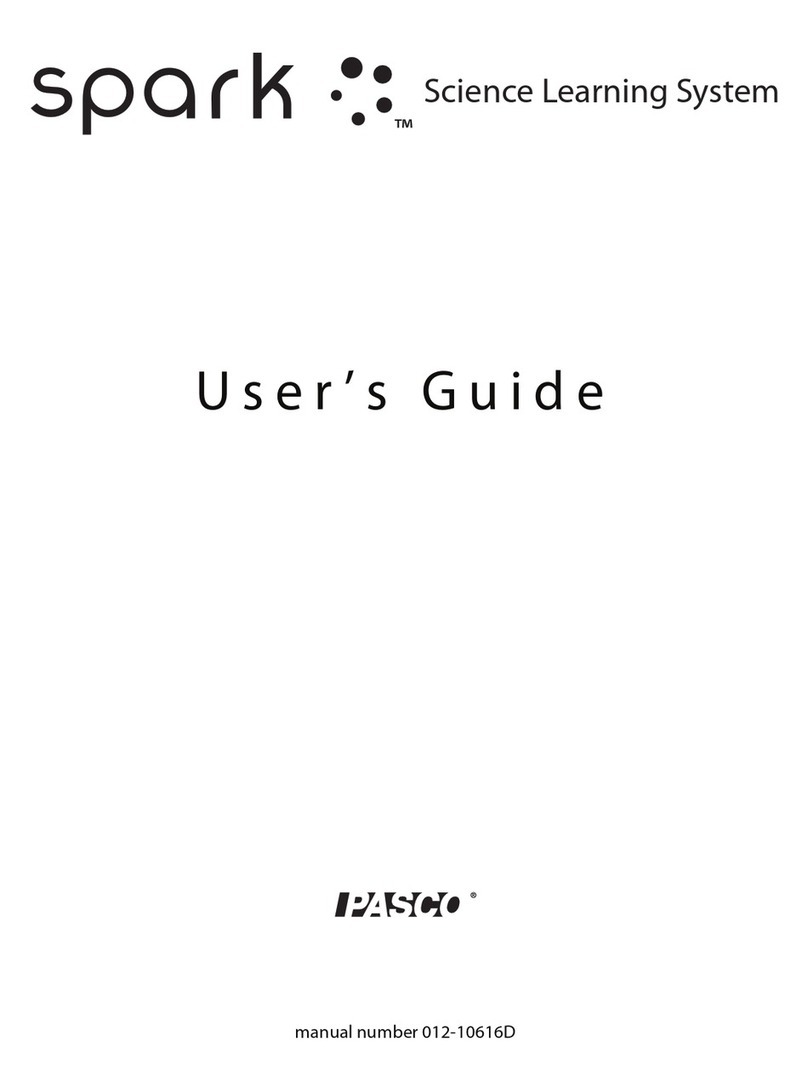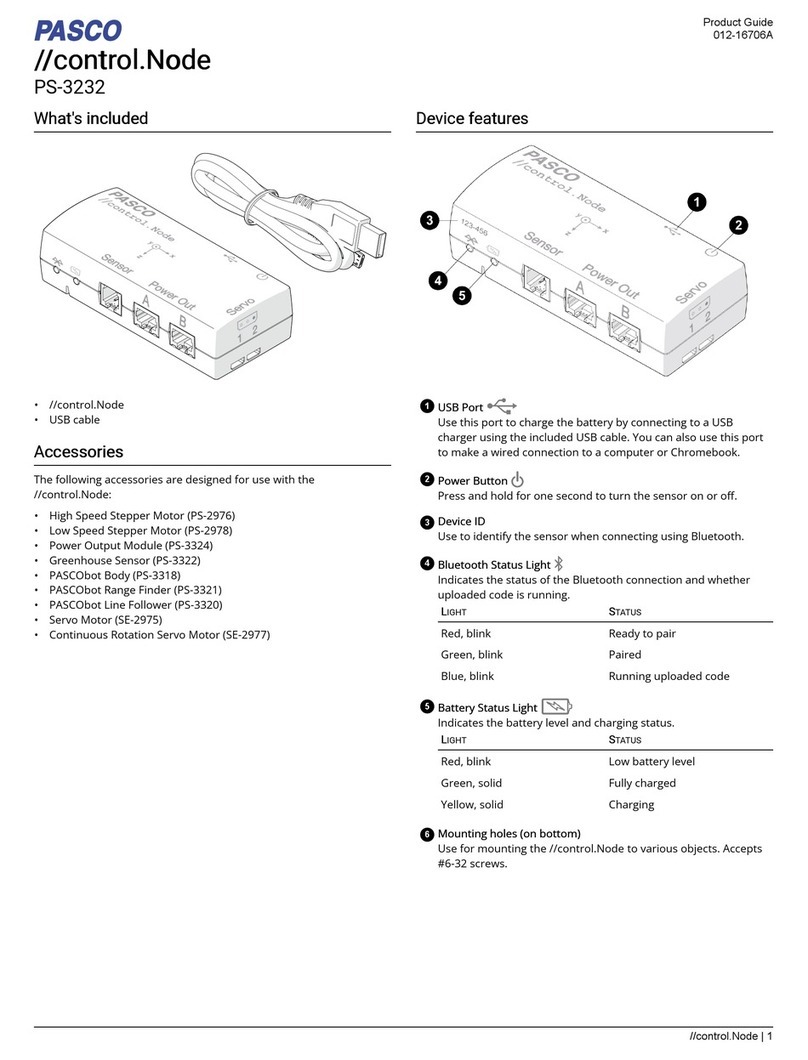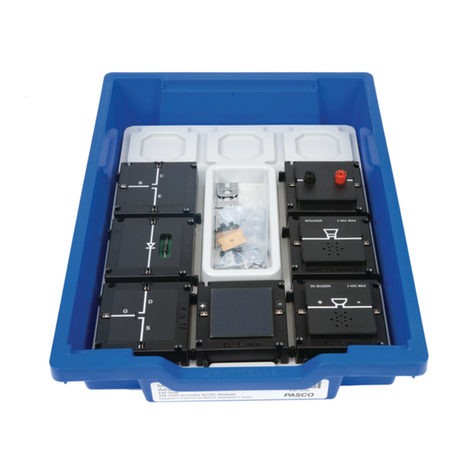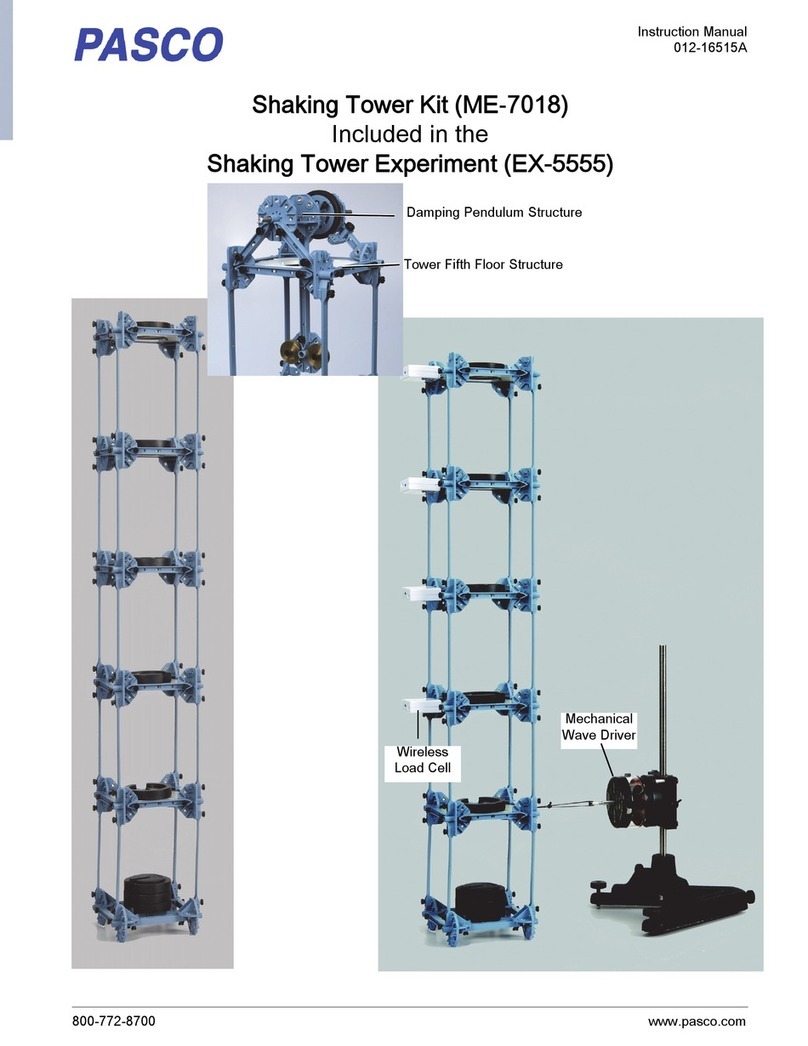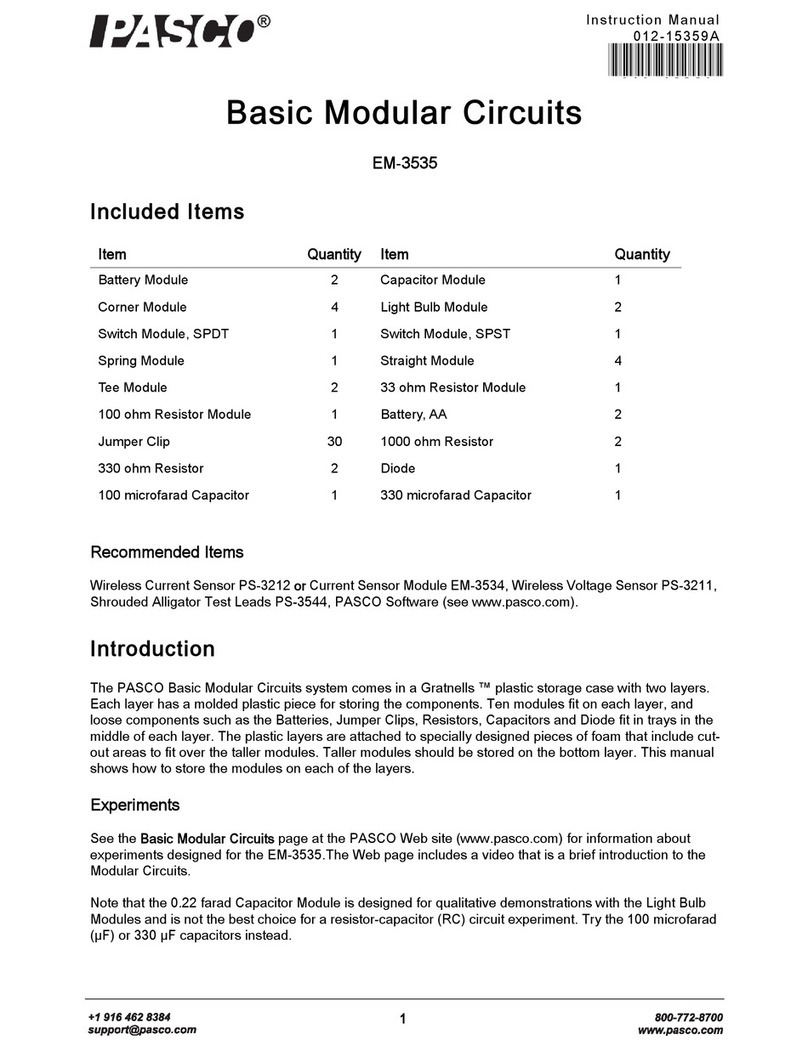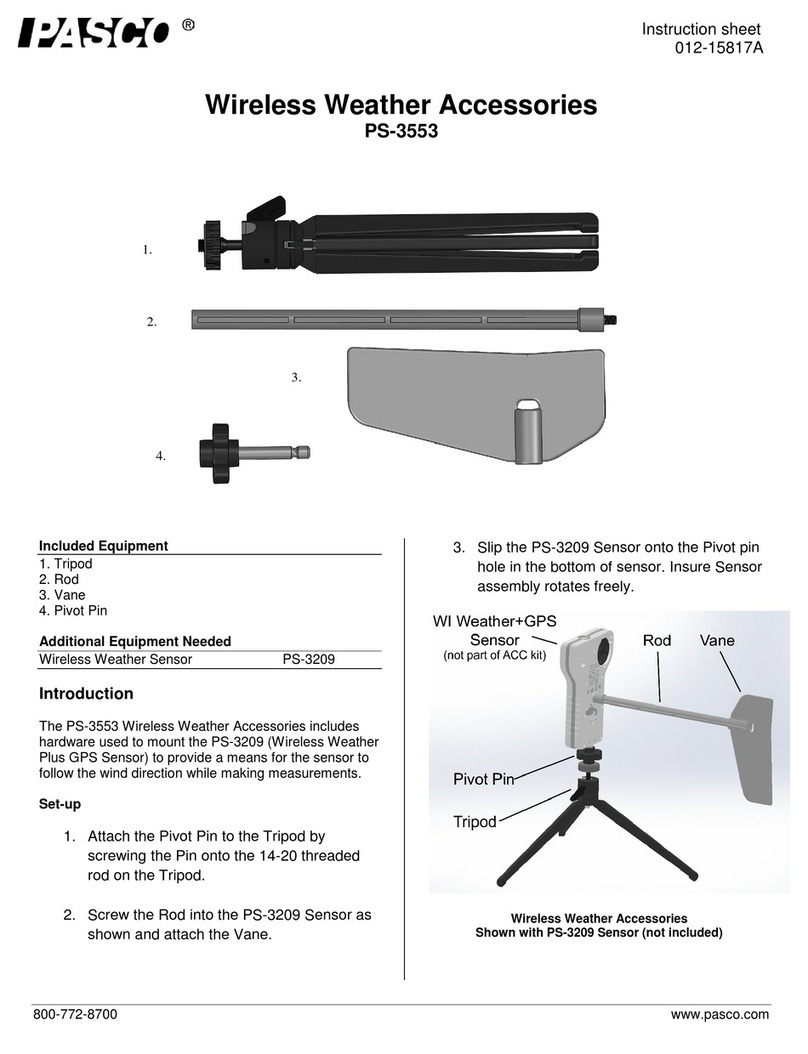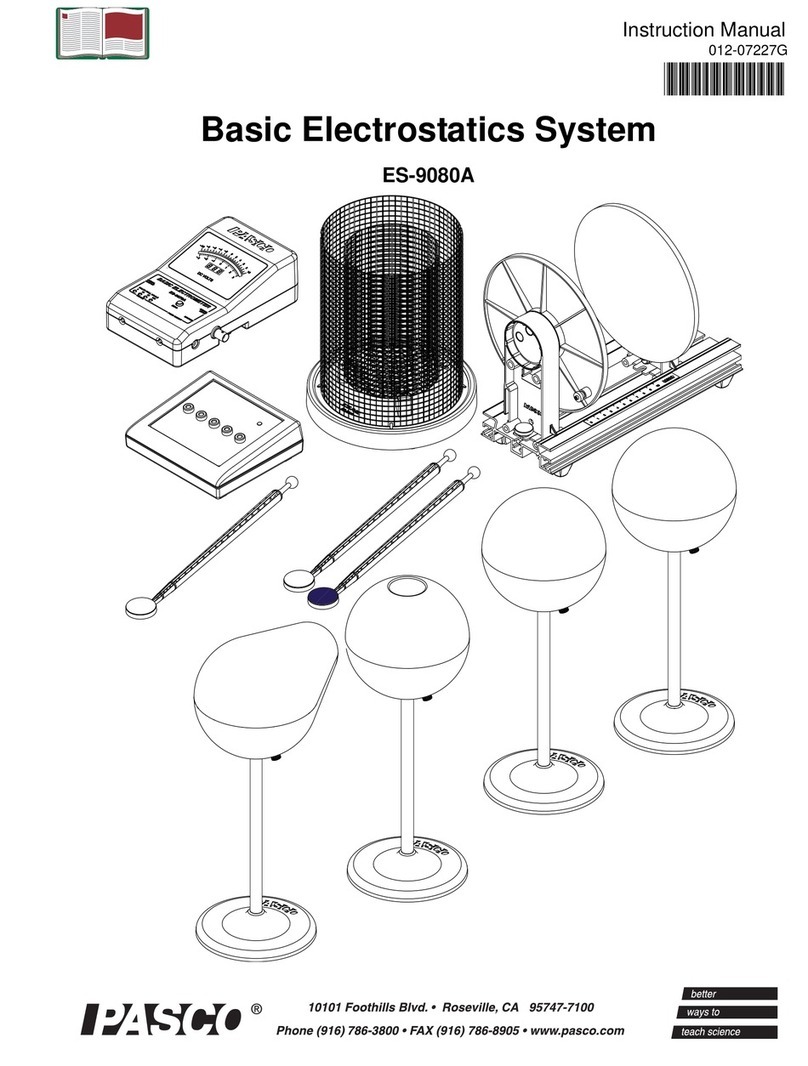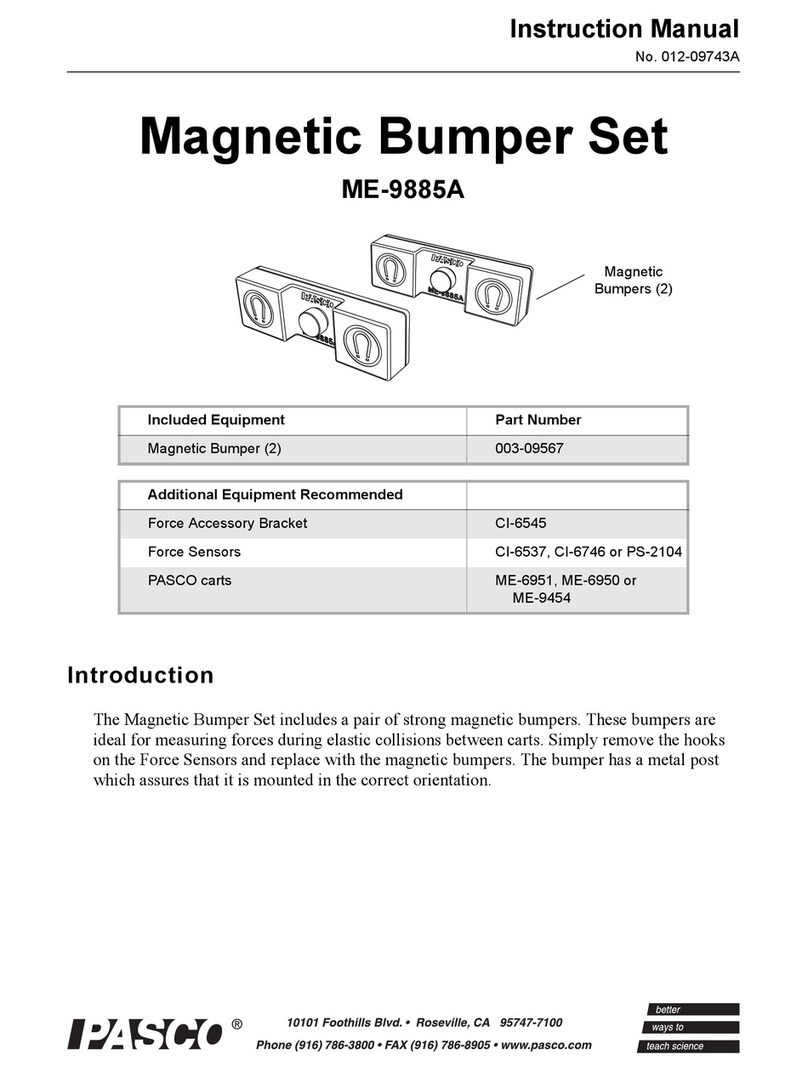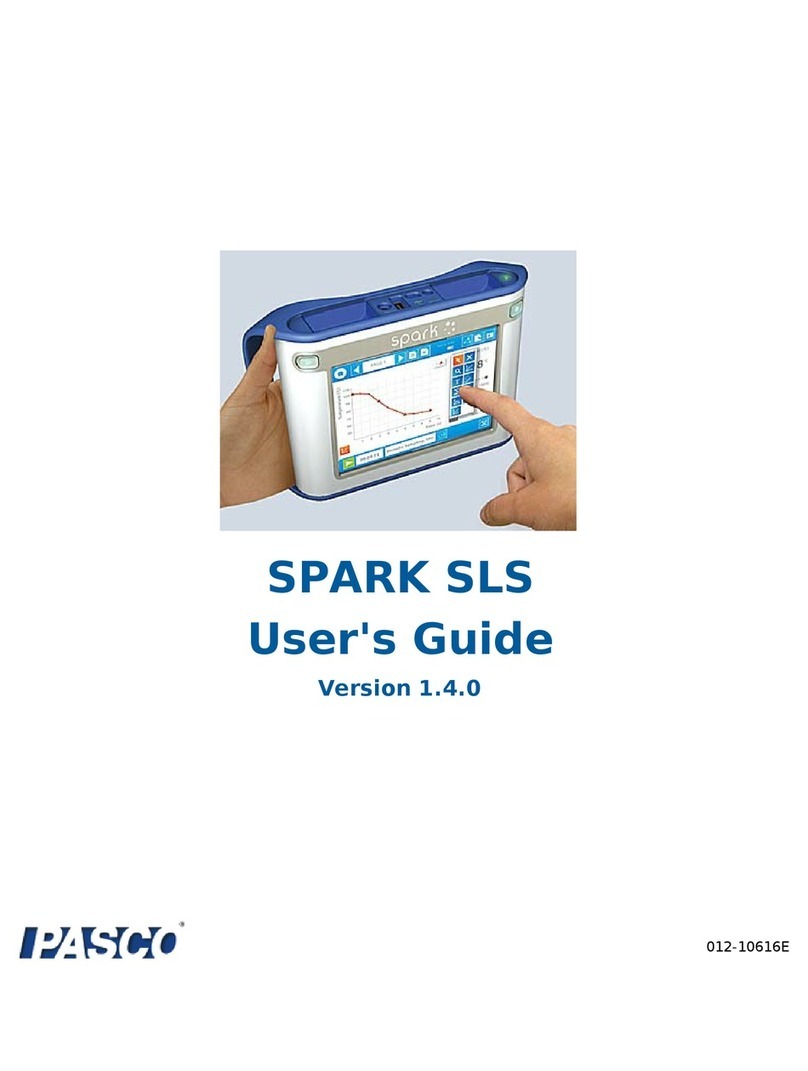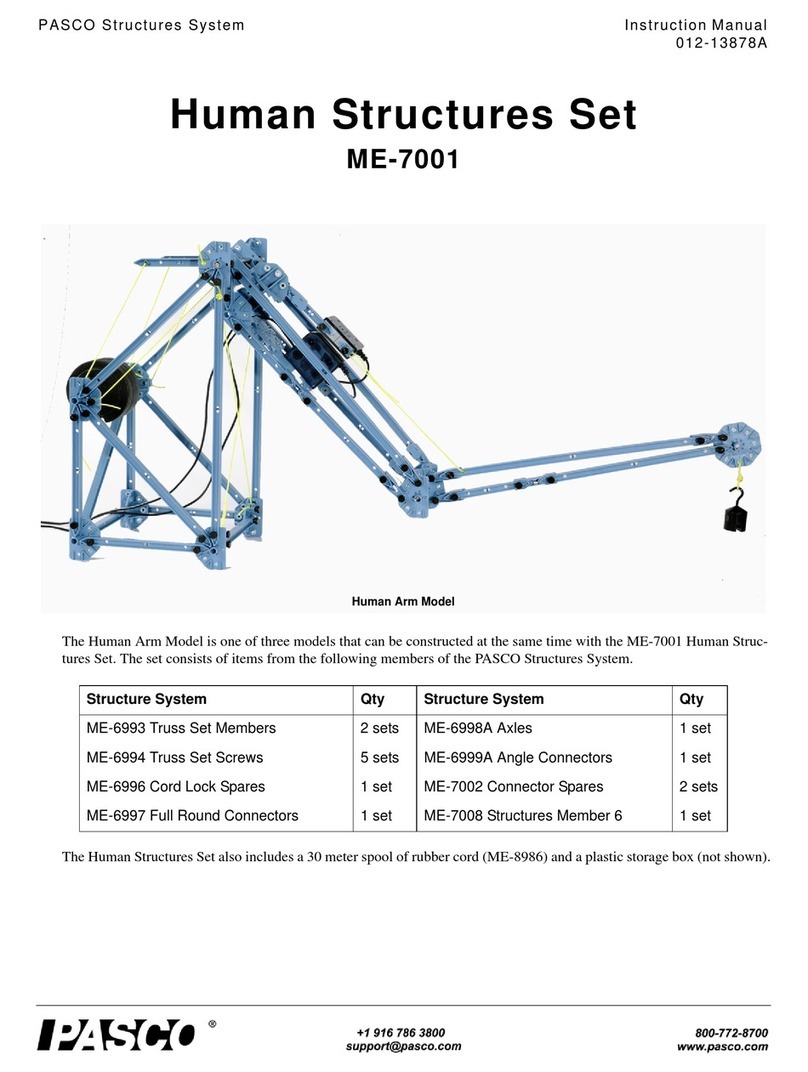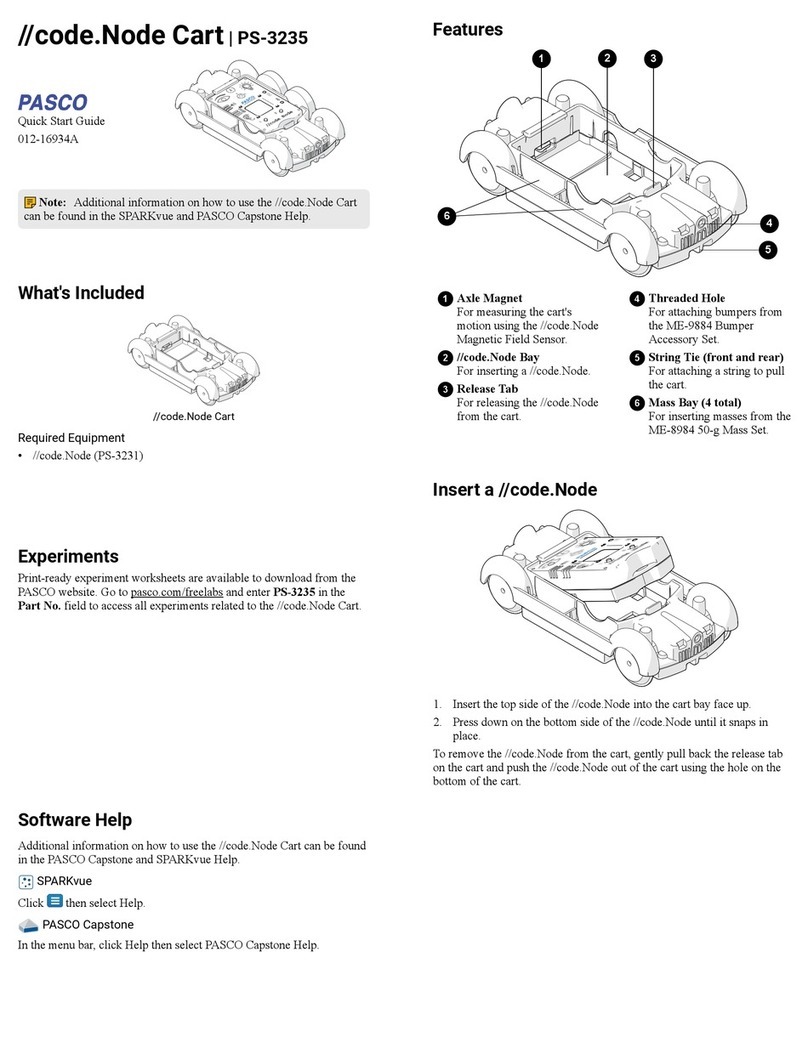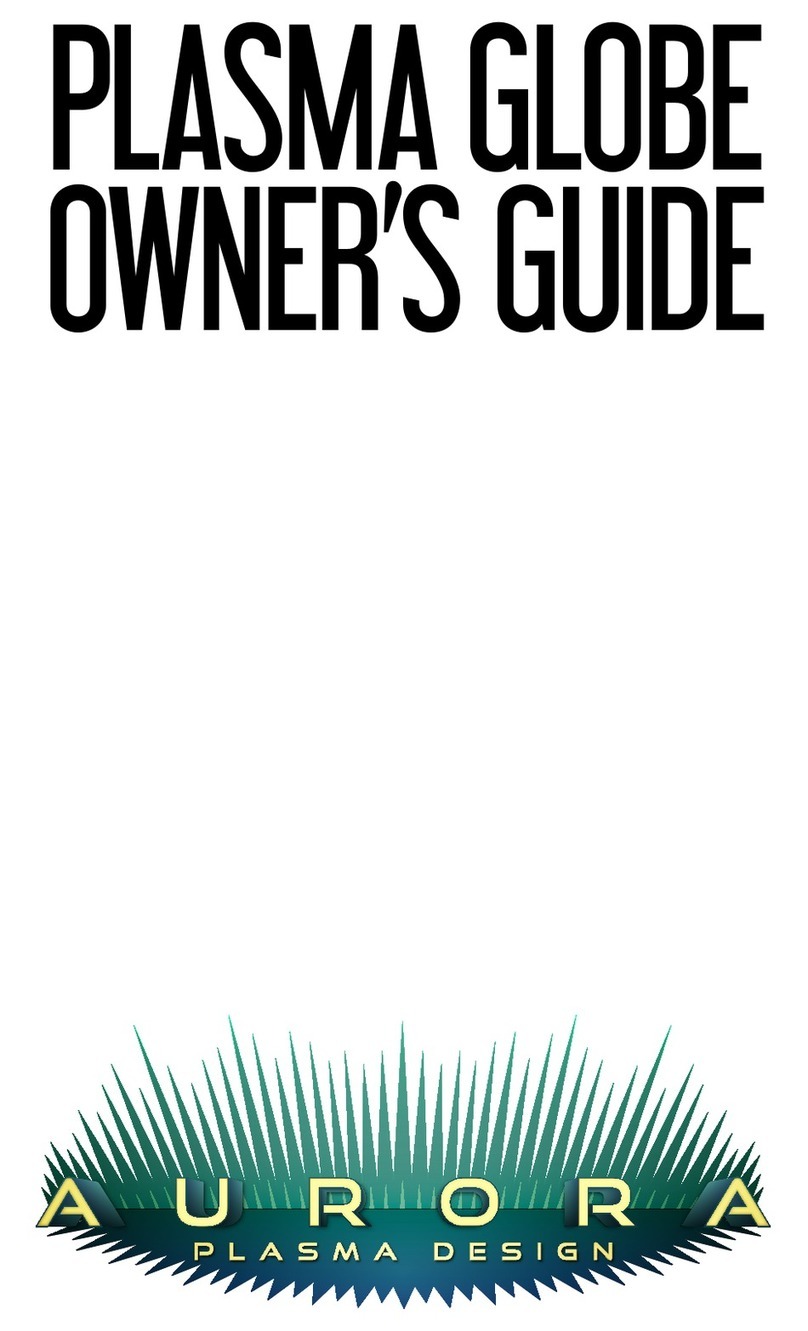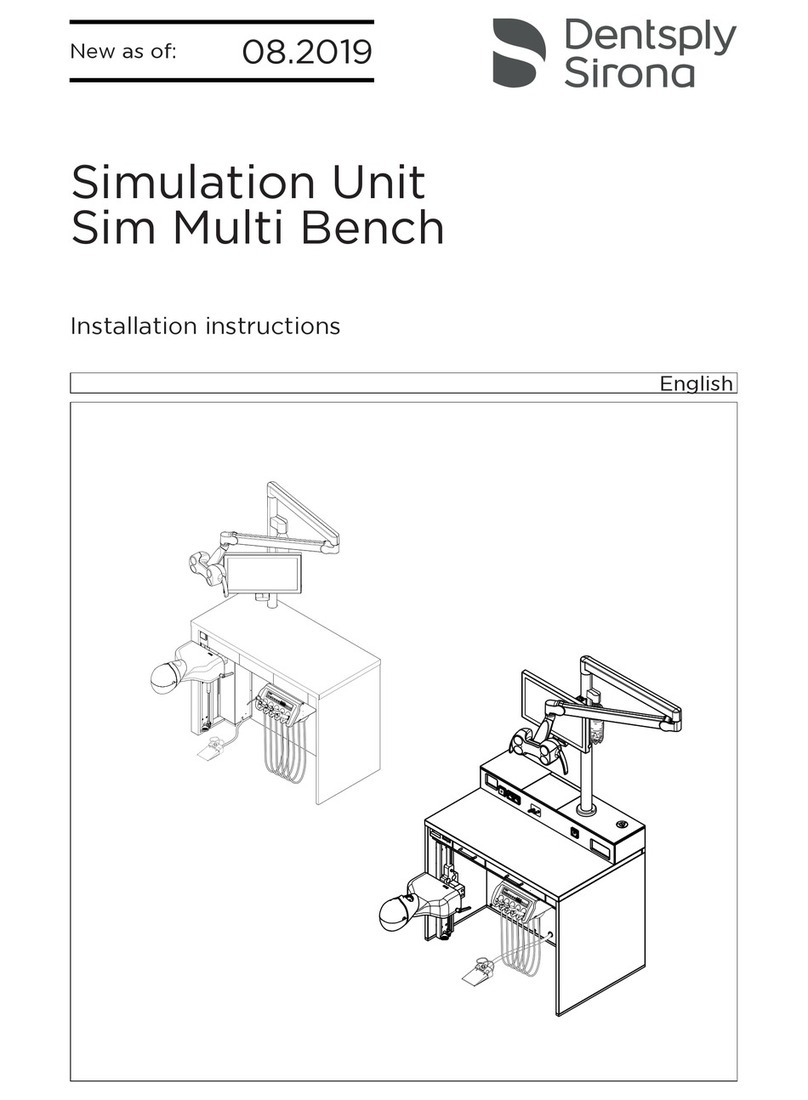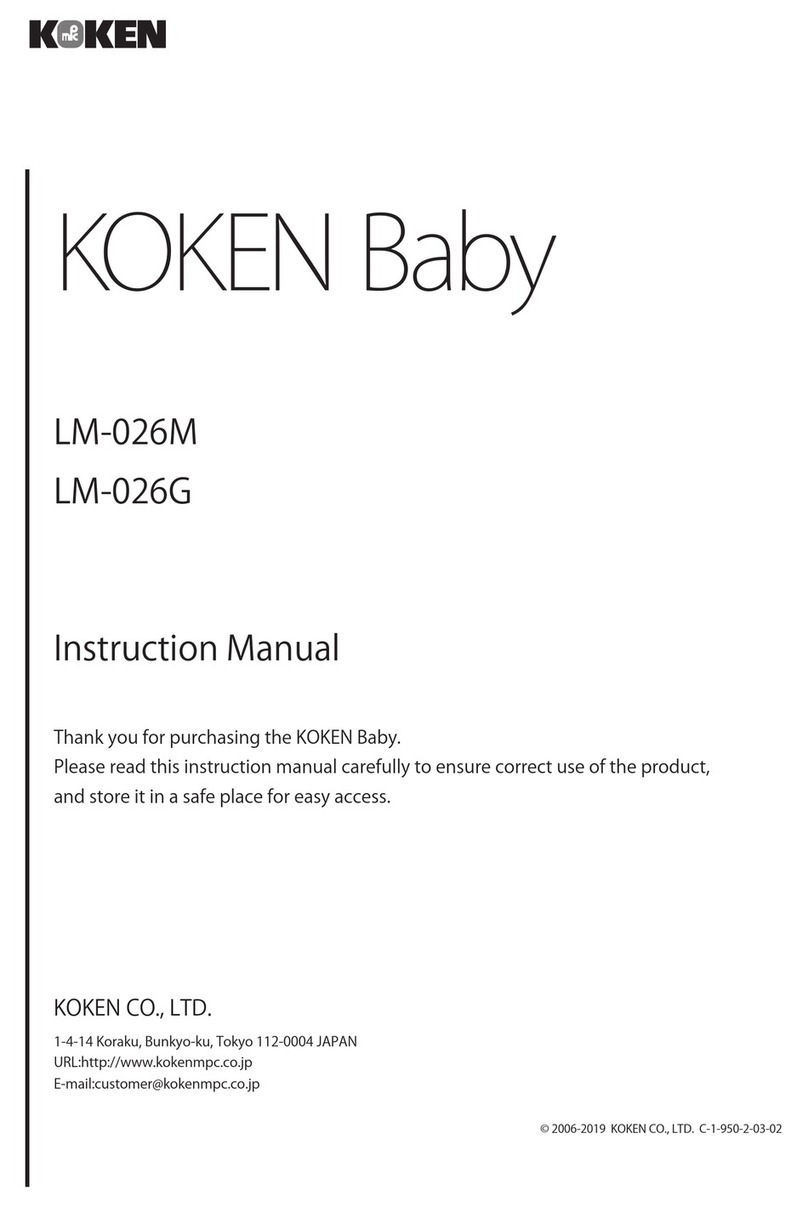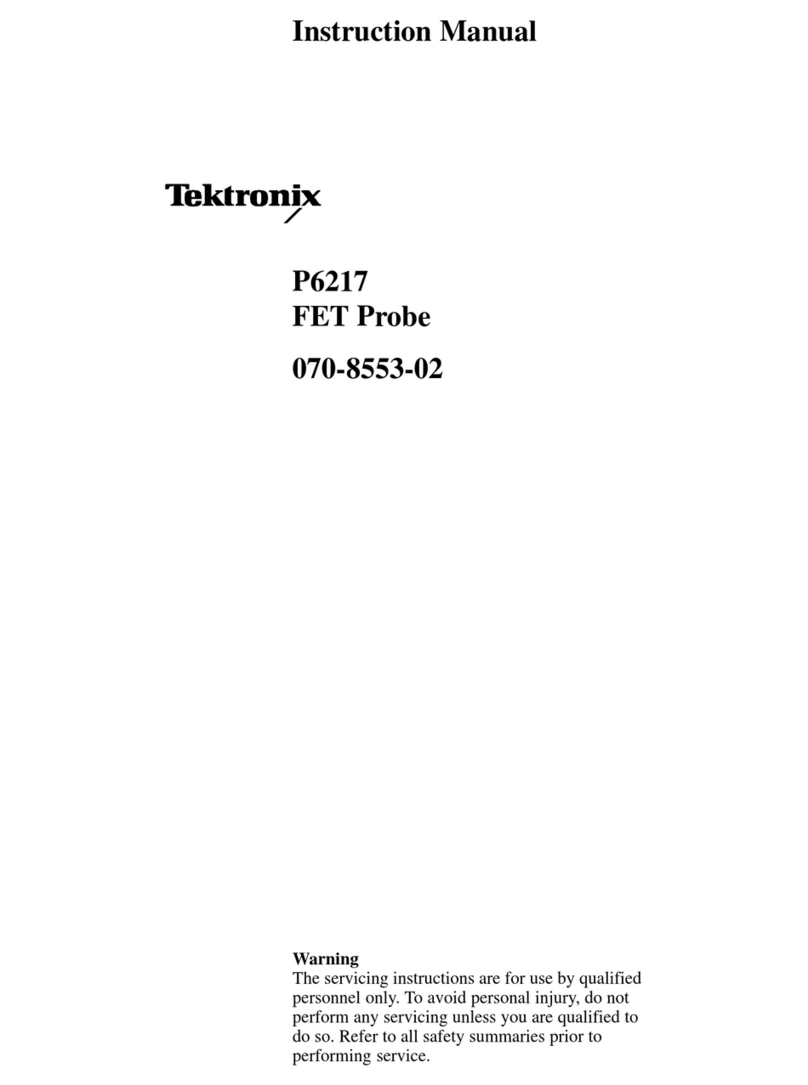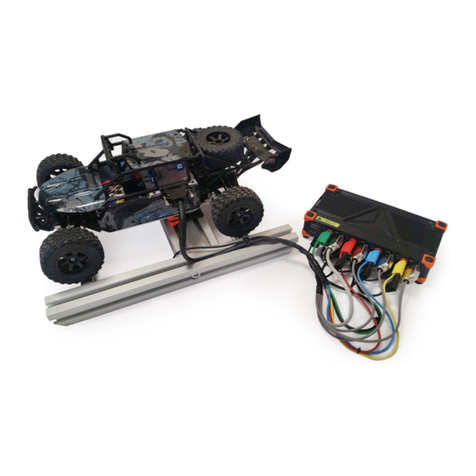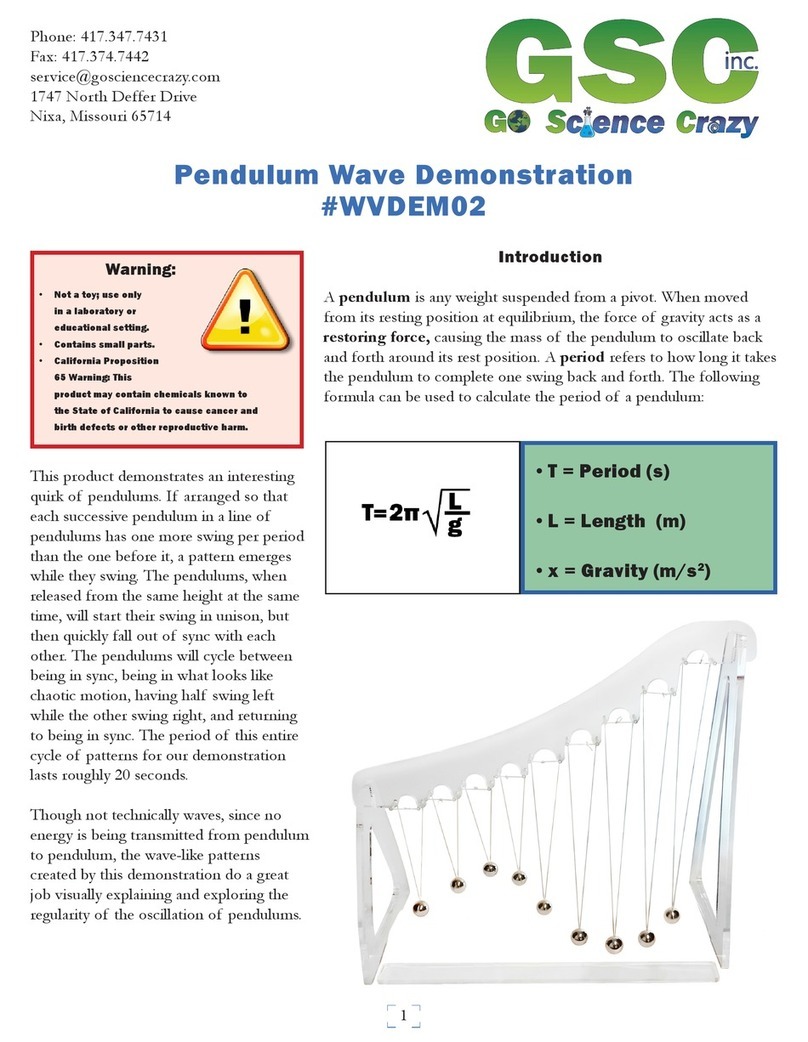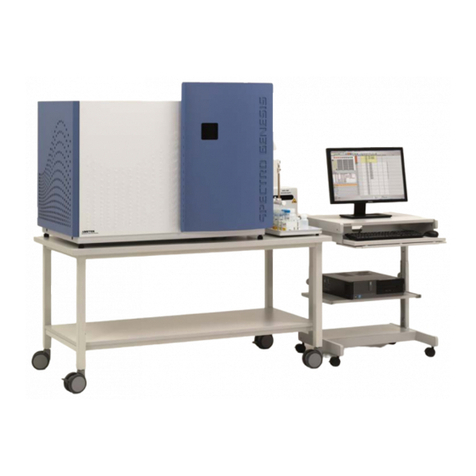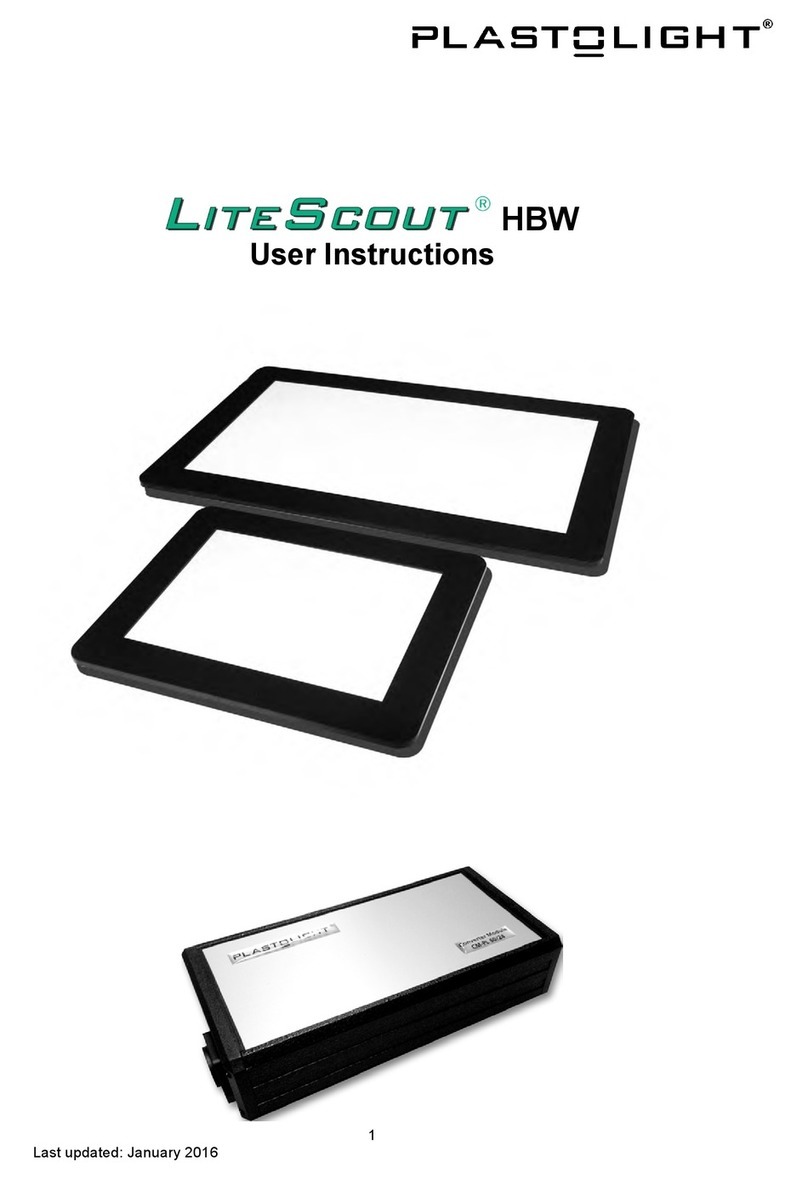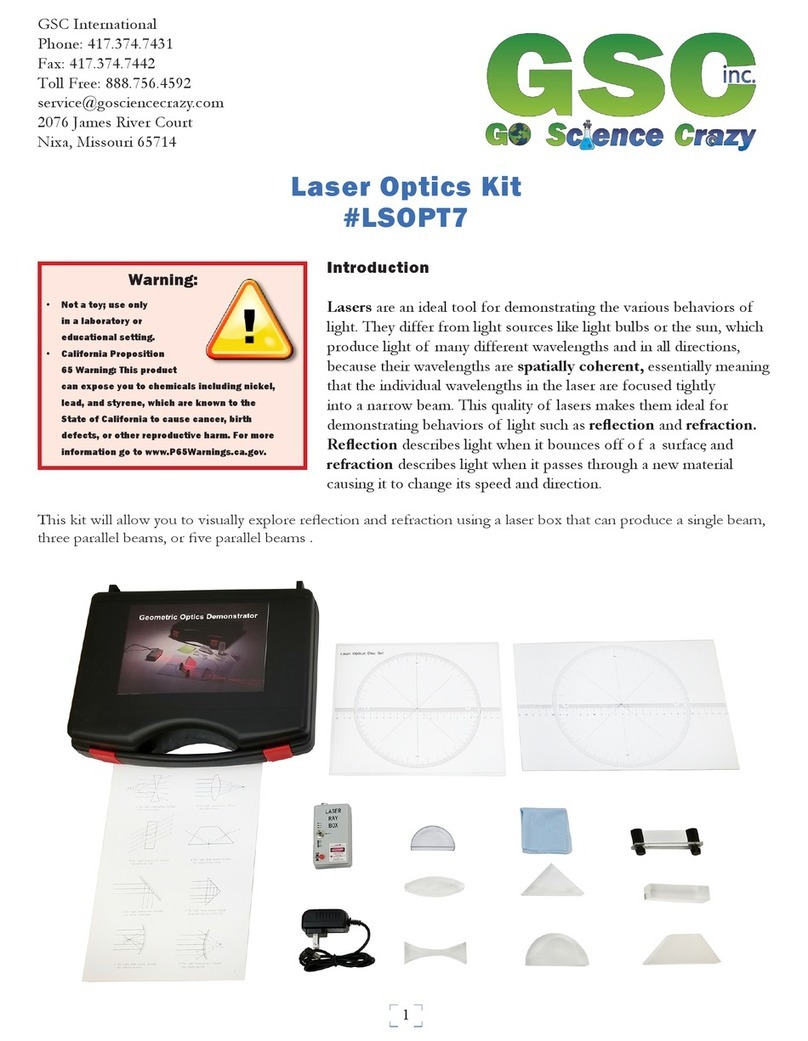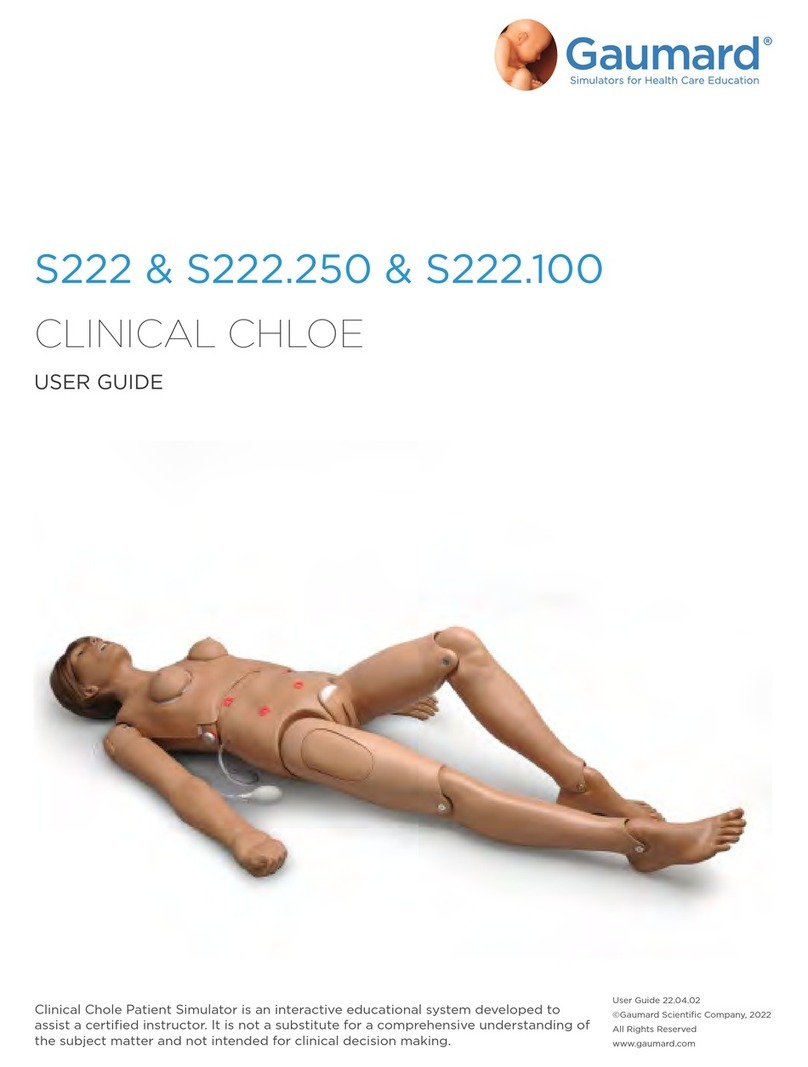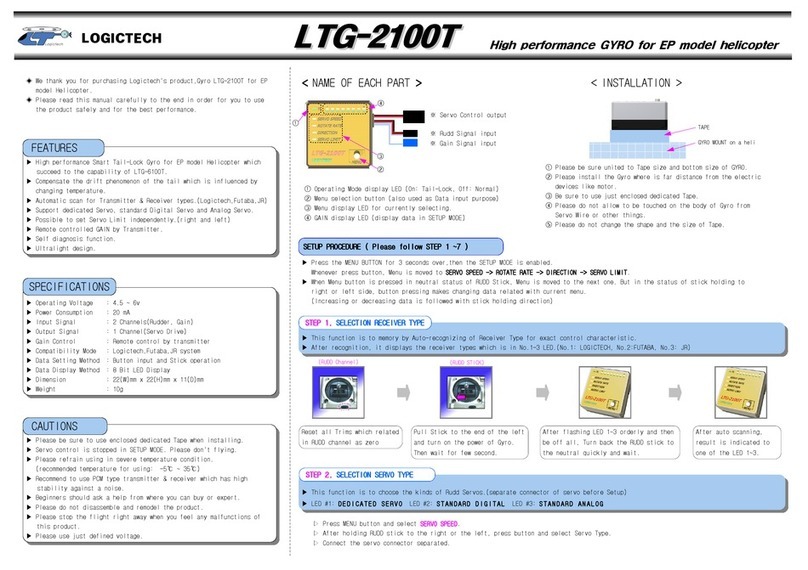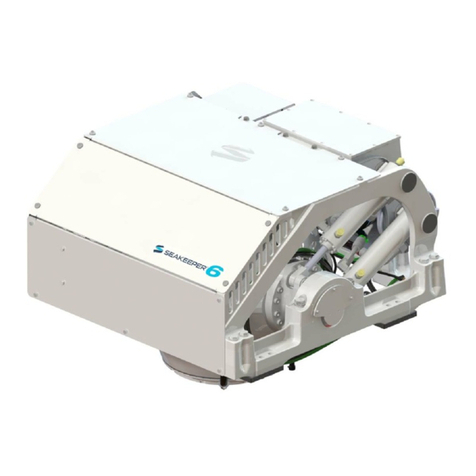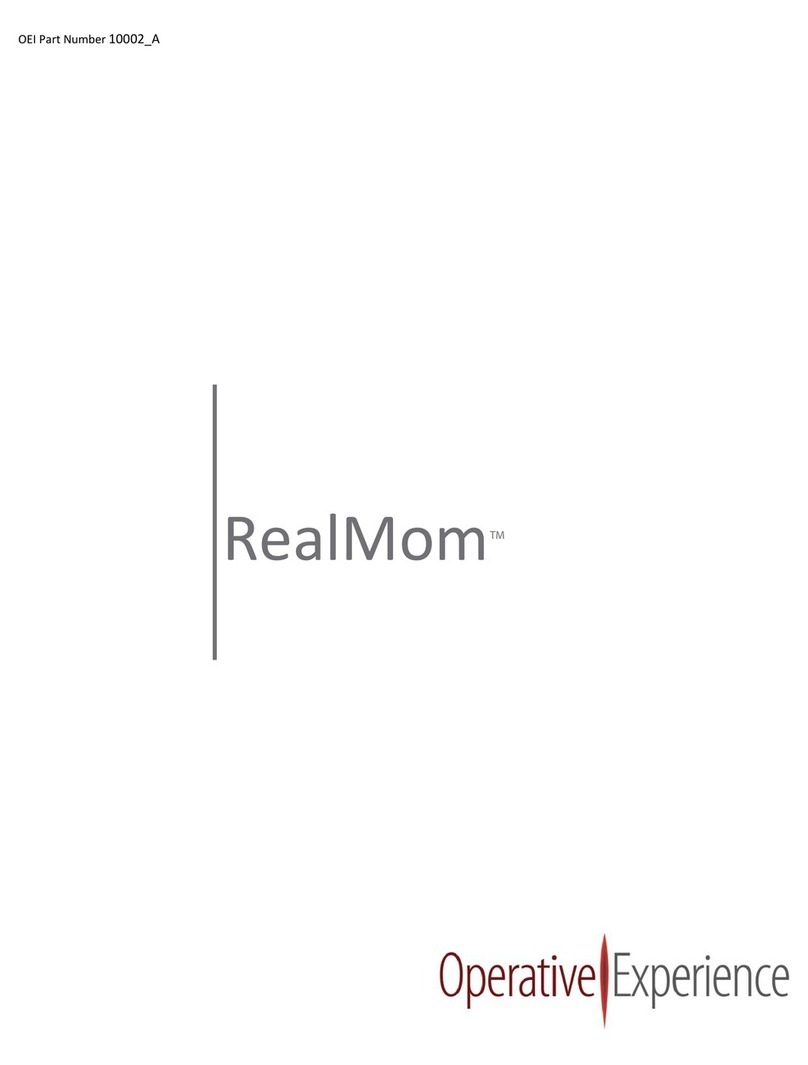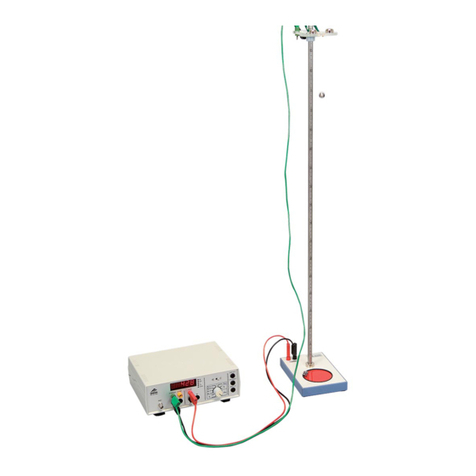
Basic Electrostatics System ES-9080B
4
*Use Model Numbers to expedite replacement orders.
Introduction
Demonstrations of electrostatic phenomenon have traditionally been limited to the simplest
experiments, using the most elementary equipment, because of problems with technique and
apparatus. Moreover, the traditional demonstrations usually gave qualitative rather than
quantitative results. PASCO has attempted to remedy this by designing the complete
ES-9080B Basic Electrostatics system. This guide will give the instructor enough of a step-
by-step explanation to master demonstration techniques. The range of demonstrations in
this guide more than covers the material usually presented in an undergraduate unit on
electrostatics.
Keep in mind the following principles for your electrostatic demonstrations:
• Read the “Equipment Description” of this manual, which provides information about using
the equipment.
Equipment orientations - Arrange the apparatus to be used so that it is sufficiently separated
and neatly arranged to insure that the students can clearly see the setup. Each
demonstration includes a diagram of the suggested equipment setup. A preferred setup
would also use a computer with a PASCO®interface to display the readings from the
Electrometer (ES-9078) in a computer screen that all can easily see. (You can use an analog
display, for example, to show the deflections of the needle, or a digits display to show the
voltage.) If a computer is not available, set the basic electrometer upright to allow the meter
to easily be seen. Always consider how the equipment arrangement may affect charge
distributions. For example, a misplaced power supply can easily change the charge
distribution on a nearby sphere. Finally, always stand behind the demonstration table to
avoid obstructing anyone’s view.
• Earth grounds - Although it is not always strictly necessary, the demonstrator should be
connected to an earth ground. Stray charges on the demonstrator can cripple an experiment.
Also, keep the electrometer grounded unless specific instructions are given to the contrary.
• Avoid unnecessary movement - If the demonstrator walks around or waves his/her arms
excessively, charge can build up in clothing and affect the results.
• Humidity - The PASCO basic electrometer has been designed to minimize the effects of
humidity. However, a particularly humid day can cause charges to leak off any of the
apparatus, radically changing the charge distribution. To help minimize leakage, keep all
equipment free of dust and oil (e.g. from fingerprints). On the other hand, a particularly dry
Additional Equipment
PASCO data acquisition Interface and software See PASCO catalog
Charge, Equipotential, and Field Mapper ES-9060
